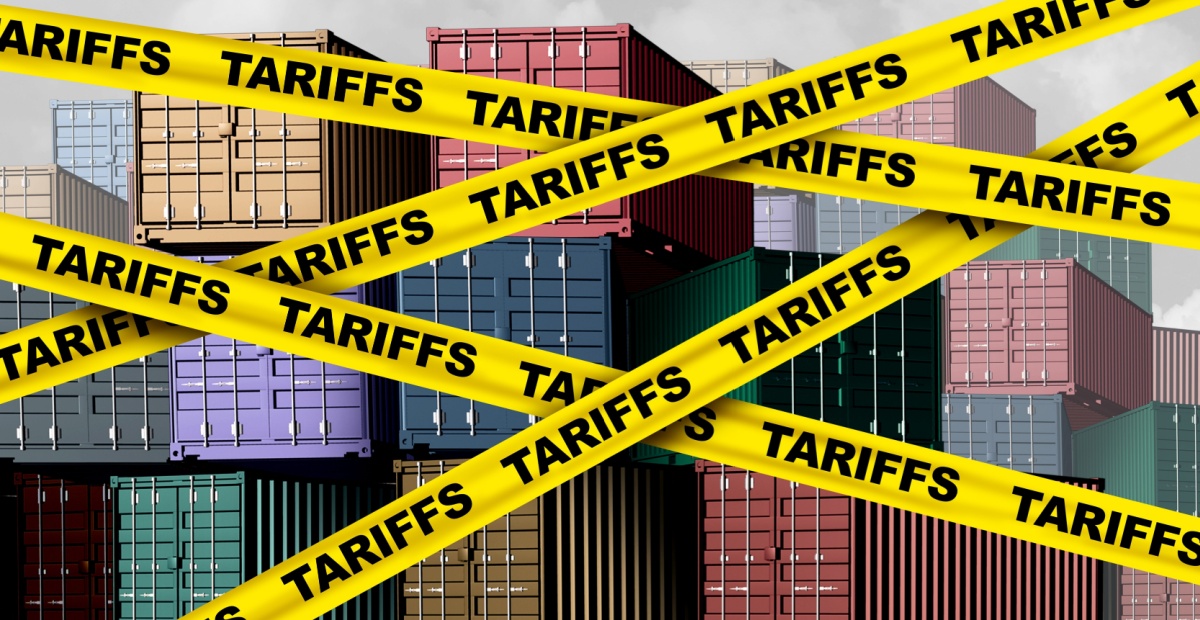Tarrifs on Steel: What You Should Know

Tarrifs on Steel: What You Should Know the steel industry is the backbone of modern infrastructure—from soaring skyscrapers to sprawling bridges. Yet beneath the gleaming façade lies a complex web of policies and levies that shape market dynamics. Central among these is the imposition of tarrifs on steel, a tool governments deploy to protect domestic producers, generate revenue, and wield geopolitical influence. This comprehensive guide explores the multifarious dimensions of steel tariffs, illuminating their rationale, mechanisms, impacts, and future trajectories.

1. The Rationale Behind Steel Tarrifs
At first glance, tarrifs on steel may appear as blunt instruments—simply taxes on imported metal. But their strategic purposes run deeper:
- Protection of Domestic Industry
Shielding nascent or struggling steelmakers from cheaper foreign competition. - National Security
Ensuring a reliable domestic supply of steel for defense and critical infrastructure. - Revenue Generation
Capturing fiscal resources from imports, especially in economies with limited tax bases. - Political Signaling
Demonstrating resolve in trade negotiations or punishing perceived unfair practices.
Each objective influences tariff design and implementation, resulting in a patchwork of rates and exemptions worldwide.
2. Types of Steel Tarrifs
Governments can choose among several tariff structures:
| Type | Description |
|---|---|
| Ad Valorem Tariff | A percentage of the import’s declared value (e.g., 25% of invoice price). |
| Specific Tariff | A fixed fee per unit weight or quantity (e.g., $100 per ton). |
| Compound Tariff | Combination of ad valorem and specific (e.g., 10% plus $20/ton). |
| Seasonal Tariff | Variable rates at different times to protect seasonal domestic production cycles. |
| Safeguard Tariff | Temporary hikes in response to surges in imports causing domestic injury. |
Understanding these variants is essential for steel users, producers, and traders navigating global markets.
3. Historical Milestones in Steel Tariff Policy
The modern debate over tarrifs on steel traces back decades:
- 1930 Smoot–Hawley Act
Broad tariffs including on steel deepened the Great Depression. - 1960s–70s: Cold War security concerns prompted many nations to maintain elevated steel tariffs.
- 2002 U.S. Steel Safeguard: Temporary 30% tariffs to protect against a surge of low‐cost imports.
- 2018 U.S. Section 232: 25% steel tariffs on national security grounds, triggering global retaliation.
Each episode underscores the potent economic and political reverberations steel tariffs can unleash.
4. Mechanisms of Impact
How do tarrifs on steel translate into real‐world effects? The main channels include:
- Price Increases
Import levies raise costs for downstream industries—automotive, construction, appliances. - Supply Chain Adjustments
Firms source steel from tariff‐free or low‐tariff countries, or relocate production. - Retaliation
Exporters impose counter‐tariffs on other goods, igniting trade skirmishes. - Investment Decisions
Higher domestic steel prices can incentivize new mill construction, altering capacity dynamics.
These mechanisms interact in complex ways, generating both intended protections and unintended distortions.
5. Economic Consequences
5.1 Consumer and Business Costs
Higher steel prices filter through to consumer goods. Cars, appliances, even canned goods become pricier. Businesses face margin compression or pass costs to customers.
5.2 Employment Effects
Protected mills may hire more workers. Yet steel‐using industries—automotive plants, machinery manufacturers—might shed jobs due to higher input costs. The net employment effect can be ambiguous.
5.3 Government Revenue vs. Welfare Loss
Tariff collections boost state coffers. Economic theory, however, highlights deadweight loss—efficiency losses borne by consumers and producers that exceed government gains.
6. Geopolitical and Trade‐Policy Dynamics
Steel tariffs often serve as diplomatic levers:
- U.S.–China Tensions: Section 232 steel tariffs formed part of a broader trade confrontation, provoking Chinese counter‐tariffs on U.S. exports.
- EU Response: The European Union imposed retaliatory duties on iconic U.S. products, from motorcycles to whiskey.
- Global Coordination: Some allies secured tariff exemptions via quota agreements, illustrating the bargaining embedded in steel tariff regimes.
The result: a fluid geopolitical landscape where tarrifs on steel are both shield and sword.
7. Industry Adaptations and Strategies
Steel consumers and producers employ various tactics:
- Tariff Engineering: Minor product modifications to qualify for lower‐tariff classifications.
- Supply Diversification: Sourcing from non‐tariffed countries or domestic secondary steel producers (scrap-based).
- Vertical Integration: Firms acquire or build their own mills to internalize steel supply.
- Lobbying and Legal Challenges: Appeals at the World Trade Organization or domestic courts to contest tariff measures.
Proactive strategies can mitigate cost shocks and secure supply continuity.
8. Case Study: U.S. Automotive Sector
The 2018 U.S. steel tariffs offer a vivid illustration:
- Immediate Steel Price Surge: Domestic HRC (hot‐rolled coil) prices spiked by over 40%.
- Automaker Responses: Some absorbed costs, others raised vehicle prices by $200–$400 per unit.
- Job Trade‐Offs: Estimated 70,000 jobs lost in auto and parts manufacturing versus 2,000 jobs saved in steel.
- Long‐Term Shifts: Increased investment in mini‐mills and specialty steel, but uncertainty over future policy lingered.
This case underscores the asymmetric impacts across value chains.
9. Legal and Institutional Frameworks
Steel tariffs operate within multilayered legal contexts:
- WTO Rules: Allow safeguards and national‐security tariffs under strict conditions, but subject to dispute settlement.
- Regional Trade Agreements: NAFTA/USMCA, EU trade deals often set lower tariff ceilings among signatories.
- Domestic Legislation: National statutes (e.g., U.S. Trade Expansion Act Section 232) grant executives tariff‐setting authority on security grounds.
Navigating these frameworks is critical for compliance and challenge strategies.
10. Environmental and Social Considerations
Tariffs on steel intersect with sustainability goals:
- Carbon Footprint: Encouraging domestic production may raise emissions if local mills use older, carbon-intensive technology.
- Green Steel Initiatives: Some governments tie tariff relief to environmentally friendly production methods.
- Social Equity: Higher infrastructure costs can slow affordable housing and public works, affecting vulnerable populations.
The environmental and social dimensions add layers to the tarrifs on steel debate.
11. Future Trends and Emerging Issues
Looking ahead, several developments will shape steel tariff policy:
- Carbon Border Adjustments: Levies on steel imports based on embedded emissions.
- Digital Monitoring: Blockchain for supply-chain transparency, ensuring tariff compliance.
- Regionalization: Nearshoring and friend-shoring trends may reduce reliance on high-tariff suppliers.
- Technological Disruption: Advances in electric-arc furnace and hydrogen-based steelmaking could alter cost structures and tariff rationales.
Stakeholders must stay agile as the steel tariff landscape evolves.
12. Mitigating the Impact of Steel Tarrifs
To navigate tarrifs on steel, consider these best practices:
- Conduct Impact Assessments: Quantify cost increases across products and scenarios.
- Engage in Policy Dialogues: Join industry associations to influence tariff design.
- Audit Supply Chains: Map all steel inputs, identify low-tariff alternatives.
- Invest in Innovation: Develop steel-substitute materials or more efficient designs.
- Leverage Trade Remedies: Seek anti-circumvention rulings or safeguard extensions when appropriate.
A multifaceted response can transform a tariff challenge into strategic opportunity.
13. Key Takeaways
- Tarrifs on steel serve protectionist, revenue, and strategic functions—but carry significant economic trade-offs.
- Effects cascade through supply chains, impacting prices, jobs, and investment decisions.
- Geopolitical dynamics make steel tariffs both instruments of power and sources of friction.
- Adaptive strategies—from tariff engineering to supply diversification—are essential for resilience.
- Emerging trends in environmental policy and technology will reshape the justification and design of future steel tariffs.
Understanding these dimensions empowers stakeholders to make informed decisions in a volatile trade environment.
Steel tariffs stand at the intersection of economics, politics, and society. They can prop up domestic mills, but also inflate costs for countless downstream industries. They offer leverage in diplomatic standoffs, yet risk tit-for-tat escalation. As the world grapples with climate change, technological shifts, and evolving geopolitical alliances, the role of tarrifs on steel will remain a pivotal—and contested—element of trade policy.
Armed with a nuanced comprehension of their rationale, mechanisms, and multifaceted impacts, businesses and policymakers can better navigate the steel tariff labyrinth. In doing so, they not only safeguard their own interests but also contribute to more balanced, resilient global trade architecture.
Steel may be the stuff of skyscrapers and ships. But the policies that govern its movement—its tariffs—are the sinews that bind together the global economic edifice. Understanding them is not optional; it is indispensable.




